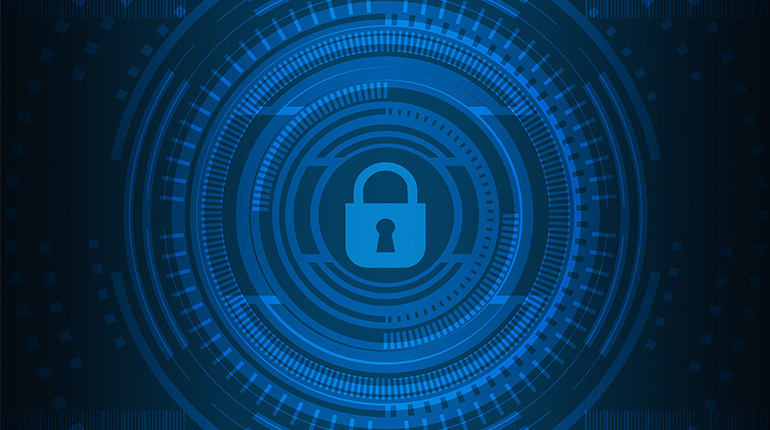As technology changes, so do cybercriminals’ methods. This year will bring more sophisticated cybersecurity threats businesses must prepare for. From AI-driven attacks to weaknesses in the remote work infrastructure, the virtual environment is even more dangerous.
Top Cybersecurity Threats
Here is a rundown of the top cybersecurity threats in 2025 and how to prepare yourself:
AI-Driven Cyber Attacks
Artificial intelligence is revolutionizing cybersecurity and arming cybercriminals with advanced new tools. For example, AI can automate phishing, produce highly realistic deepfakes of scams, and even bypass traditional defenses. Moreover, attackers are now deploying AI-based malware that adapts in real-time to evade detection. Therefore, businesses must fight back with AI-based threat detection and employee training to identify sophisticated cyber-attacks.
Ransomware 2.0
Ransomware is not new, but in 2025, we expect it to be even more dangerous. Specifically, cyber attackers are shifting from simple data encryption to “double extortion,” where they first steal sensitive information and encrypt it. Then, they threaten to publish the data if you don’t pay the ransom. To combat this, businesses must invest in strong backup techniques, zero-trust security architecture, and user awareness to help mitigate these risks.
Supply Chain Attacks
Supply chain attacks will become a norm in 2025 as cyber attackers exploit third-party vendor weaknesses. For example, attackers target software updates, cloud providers, and major suppliers to gain access to their main targets. Therefore, businesses must thoroughly vet their vendors, enforce stringent security protocols, and scan constantly for supply chain threats.
IoT Vulnerabilities
The Internet of Things (IoT) is bigger than ever, with more connected devices on networks. However, most IoT devices lack proper security, making them vulnerable to hacker attacks. As a result, hackers can use poorly secured smart devices as gateways for larger network intrusions. To mitigate these risks, organizations should have strong authentication processes, update IoT firmware, and segregate IoT networks to limit access.
Deepfake Scams and Social Engineering
Deepfake technology has advanced to achieve an incredibly realistic level. Consequently, cybercriminals can now mimic business partners, employees, or executives with eerie accuracy. They use AI-driven forgeries for financial crimes, espionage, and propaganda warfare. Therefore, organizations must have robust verification processes and train employees in social engineering tactics. Additionally, they should monitor for suspicious financial transactions or sensitive questions.
Cloud Security Risks
Attackers are targeting misconfigurations and insecure APIs as prime vulnerabilities due to the increasing dependency on cloud computing. As a result, cybercriminals exploit cloud vulnerabilities to gain illegal access to sensitive information. To address this, organizations must impose stringent access controls, audit cloud security settings regularly, and adopt a zero-trust model.
Insider Threats
Not all cybersecurity threats come from external hackers. Angry employees, inattentive workers, or compromised insiders can pose significant security issues. Whether intentional or not, insider attacks can lead to data breaches, financial losses, and reputational damage. To counter this, firms must use behavior monitoring systems, limit worker access to confidential data, and conduct regular cybersecurity training.
Regulatory Compliance Challenges
As cybersecurity legislation grows at an exponential rate, businesses must stay in line with new regulations. In particular, governments will enforce stricter data protection legislation and industry-specific cybersecurity requirements globally in 2025. Therefore, businesses must stay up-to-date with compliance mandates like GDPR, CCPA, and upcoming national cybersecurity regulations. Doing so helps reduce penalties and legal trouble.
How Businesses Can Stay Ahead
To fight such threats, companies need to implement an aggressive cybersecurity policy. Some key actions are:
- Install AI-based cybersecurity tools to detect and respond to threats in real-time.
- Train staff on how to detect phishing scams, deepfakes, and social engineering methods.
- Review policies regularly to keep up with new cyber threats.
- Use multi-factor authentication to protect accounts.
- Run regular cybersecurity audits to detect and repair vulnerabilities.
- Enforce a zero-trust security stance to limit access to confidential data.
Conclusion
Cyber threats are evolving, and businesses that fail to adapt will face disastrous consequences. By staying informed and taking proactive security measures, businesses can protect their data, workers, and consumers. This helps guard against the increasing wave of 2025 cyberattacks.
At SMS Datacenter, our Cyber Security Services in Orange County help protect your business from evolving cyber threats. We offer proactive defense strategies and expert solutions. To learn more, contact us today at 949-223-9220 or [email protected].

